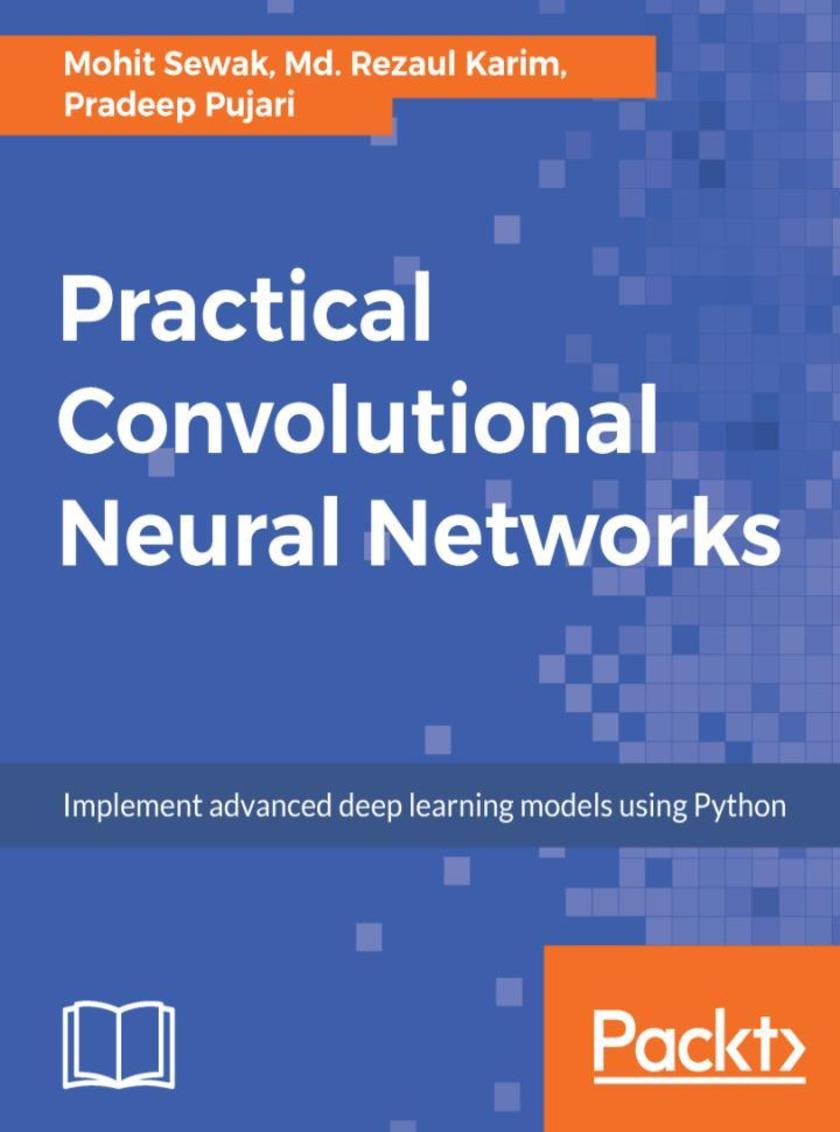
Practical Convolutional Neural Networks
¥63.21
One stop guide to implementing award-winning, and cutting-edge CNN architectures About This Book ? Fast-paced guide with use cases and real-world examples to get well versed with CNN techniques ? Implement CNN models on image classification, transfer learning, Object Detection, Instance Segmentation, GANs and more ? Implement powerful use-cases like image captioning, reinforcement learning for hard attention, and recurrent attention models Who This Book Is For This book is for data scientists, machine learning and deep learning practitioners, Cognitive and Artificial Intelligence enthusiasts who want to move one step further in building Convolutional Neural Networks. Get hands-on experience with extreme datasets and different CNN architectures to build efficient and smart ConvNet models. Basic knowledge of deep learning concepts and Python programming language is expected. What You Will Learn ? From CNN basic building blocks to advanced concepts understand practical areas they can be applied to ? Build an image classifier CNN model to understand how different components interact with each other, and then learn how to optimize it ? Learn different algorithms that can be applied to Object Detection, and Instance Segmentation ? Learn advanced concepts like attention mechanisms for CNN to improve prediction accuracy ? Understand transfer learning and implement award-winning CNN architectures like AlexNet, VGG, GoogLeNet, ResNet and more ? Understand the working of generative adversarial networks and how it can create new, unseen images In Detail Convolutional Neural Network (CNN) is revolutionizing several application domains such as visual recognition systems, self-driving cars, medical discoveries, innovative eCommerce and more.You will learn to create innovative solutions around image and video analytics to solve complex machine learning and computer vision related problems and implement real-life CNN models. This book starts with an overview of deep neural networkswith the example of image classification and walks you through building your first CNN for human face detector. We will learn to use concepts like transfer learning with CNN, and Auto-Encoders to build very powerful models, even when not much of supervised training data of labeled images is available. Later we build upon the learning achieved to build advanced vision related algorithms for object detection, instance segmentation, generative adversarial networks, image captioning, attention mechanisms for vision, and recurrent models for vision. By the end of this book, you should be ready to implement advanced, effective and efficient CNN models at your professional project or personal initiatives by working on complex image and video datasets. Style and approach An easy to follow concise and illustrative guide explaining the core concepts of ConvNets to help you understand, implement and deploy your CNN models quickly.
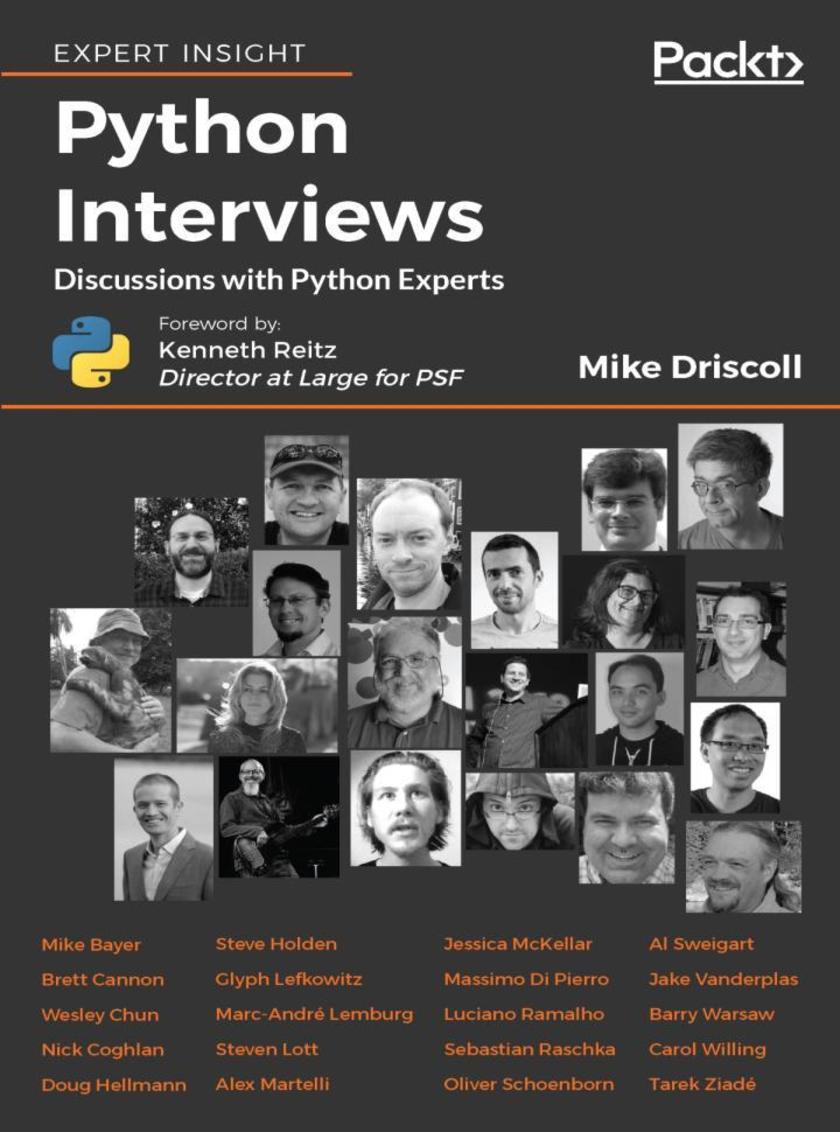
Python Interviews
¥63.21
Mike Driscoll takes you on a journey talking to a hall-of-fame list of truly remarkable Python experts. You’ll be inspired every time by their passion for the Python language, as they share with you their experiences, contributions, and careers in Python. About This Book ? Hear from these key Python thinkers about the current status of Python, and where it's heading in the future ? Listen to their close thoughts on significant Python topics, such as Python's role in scientific computing, and machine learning ? Understand the direction of Python, and what needs to change for Python 4 Who This Book Is For Python programmers and students interested in the way that Python is used – past and present – with useful anecdotes. It will also be of interest to those looking to gain insights from top programmers. What You Will Learn ? How successful programmers think ? The history of Python ? Insights into the minds of the Python core team ? Trends in Python programming In Detail Each of these twenty Python Interviews can inspire and refresh your relationship with Python and the people who make Python what it is today. Let these interviews spark your own creativity, and discover how you also have the ability to make your mark on a thriving tech community. This book invites you to immerse in the Python landscape, and let these remarkable programmers show you how you too can connect and share with Python programmers around the world. Learn from their opinions, enjoy their stories, and use their tech tips. ? Brett Cannon - former director of the PSF, Python core developer, led the migration to Python 3. ? Steve Holden - tireless Python promoter and former chairman and director of the PSF. ? Carol Willing - former director of the PSF and Python core developer, Project Jupyter Steering Council member. ? Nick Coghlan - founding member of the PSF and Python core developer. ? Jessica McKellar - former director of the PSF and Python activist. ? Marc-André Lemburg - Python core developer and founding member of the PSF. ? Glyph Lefkowitz - founder of Twisted and fellow of the PSF. ? Doug Hellmann - fellow of the PSF, creator of the Python Module of the Week blog, Python community member since 1998. ? Massimo Di Pierro - fellow of the PSF, data scientist and the inventor of web2py. ? Alex Martelli - fellow of the PSF and co-author of Python in a Nutshell. ? Barry Warsaw - fellow of the PSF, Python core developer since 1995, and original member of PythonLabs. ? Tarek Ziadé - founder of Afpy and author of Expert Python Programming. ? Sebastian Raschka - data scientist and author of Python Machine Learning. ? Wesley Chun - fellow of the PSF and author of the Core Python Programming books. ? Steven Lott - Python blogger and author of Python for Secret Agents. ? Oliver Schoenborn - author of Pypubsub and wxPython mailing list contributor. ? Al Sweigart - bestselling author and creator of the Python modules Pyperclip and PyAutoGUI. ? Luciano Ramalho - fellow of the PSF and the author of Fluent Python. ? Mike Bayer - fellow of the PSF, creator of open source libraries including SQLAlchemy. ? Jake Vanderplas - data scientist and author of Python Data Science Handbook. Style and approach This is a book of one-to-one interviews with leading Python programmers and luminaries in the field.
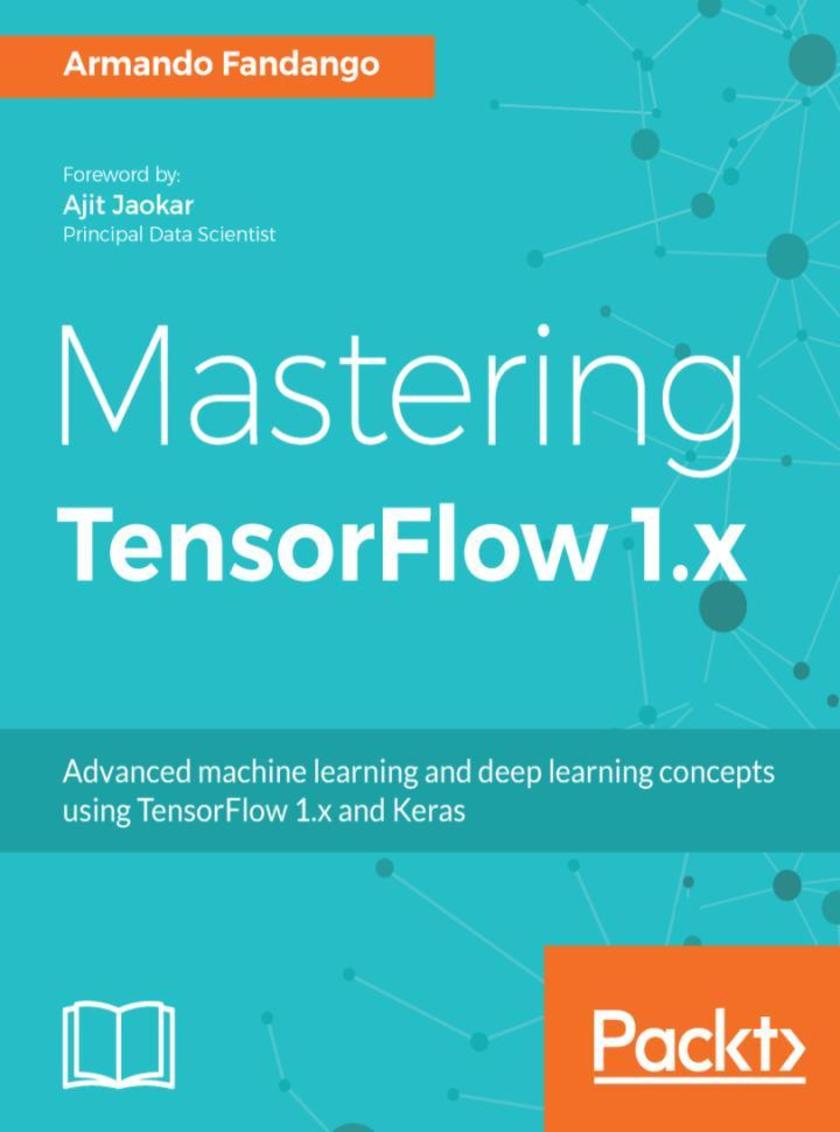
Mastering TensorFlow 1.x
¥63.21
Build, scale, and deploy deep neural network models using the star libraries in Python About This Book ? Delve into advanced machine learning and deep learning use cases using Tensorflow and Keras ? Build, deploy, and scale end-to-end deep neural network models in a production environment ? Learn to deploy TensorFlow on mobile, and distributed TensorFlow on GPU, Clusters, and Kubernetes Who This Book Is For This book is for data scientists, machine learning engineers, artificial intelligence engineers, and for all TensorFlow users who wish to upgrade their TensorFlow knowledge and work on various machine learning and deep learning problems. If you are looking for an easy-to-follow guide that underlines the intricacies and complex use cases of machine learning, you will find this book extremely useful. Some basic understanding of TensorFlow is required to get the most out of the book. What You Will Learn ? Master advanced concepts of deep learning such as transfer learning, reinforcement learning, generative models and more, using TensorFlow and Keras ? Perform supervised (classification and regression) and unsupervised (clustering) learning to solve machine learning tasks ? Build end-to-end deep learning (CNN, RNN, and Autoencoders) models with TensorFlow ? Scale and deploy production models with distributed and high-performance computing on GPU and clusters ? Build TensorFlow models to work with multilayer perceptrons using Keras, TFLearn, and R ? Learn the functionalities of smart apps by building and deploying TensorFlow models on iOS and Android devices ? Supercharge TensorFlow with distributed training and deployment on Kubernetes and TensorFlow Clusters In Detail TensorFlow is the most popular numerical computation library built from the ground up for distributed, cloud, and mobile environments. TensorFlow represents the data as tensors and the computation as graphs. This book is a comprehensive guide that lets you explore the advanced features of TensorFlow 1.x. Gain insight into TensorFlow Core, Keras, TF Estimators, TFLearn, TF Slim, Pretty Tensor, and Sonnet. Leverage the power of TensorFlow and Keras to build deep learning models, using concepts such as transfer learning, generative adversarial networks, and deep reinforcement learning. Throughout the book, you will obtain hands-on experience with varied datasets, such as MNIST, CIFAR-10, PTB, text8, and COCO-Images. You will learn the advanced features of TensorFlow1.x, such as distributed TensorFlow with TF Clusters, deploy production models with TensorFlow Serving, and build and deploy TensorFlow models for mobile and embedded devices on Android and iOS platforms. You will see how to call TensorFlow and Keras API within the R statistical software, and learn the required techniques for debugging when the TensorFlow API-based code does not work as expected. The book helps you obtain in-depth knowledge of TensorFlow, making you the go-to person for solving artificial intelligence problems. By the end of this guide, you will have mastered the offerings of TensorFlow and Keras, and gained the skills you need to build smarter, faster, and efficient machine learning and deep learning systems. Style and approach Step-by-step comprehensive guide filled with advanced, real-world examples to help you master Tensorflow 1.x
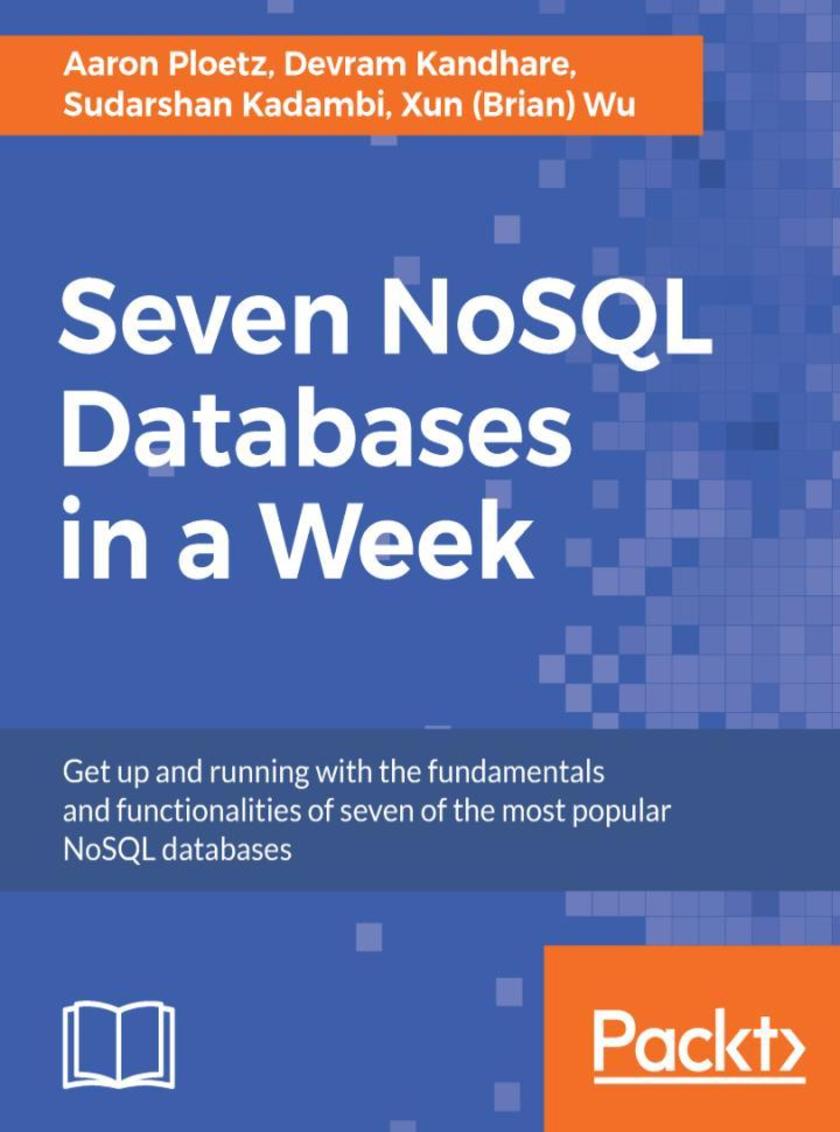
Seven NoSQL Databases in a Week
¥63.21
A beginner's guide to get you up and running with Cassandra, DynamoDB, HBase, InfluxDB, MongoDB, Neo4j, and Redis About This Book ? Covers the basics of 7 NoSQL databases and how they are used in the enterprises ? Quick introduction to MongoDB, DynamoDB, Redis, Cassandra, Neo4j, InfluxDB, and Hbase ? Includes effective techniques for database querying and management Who This Book Is For If you are a budding DBA or a developer who wants to get started with the fundamentals of NoSQL databases, this book is for you. Relational DBAs who want to get insights into the various offerings of popular NoSQL databases will also find this book to be very useful. What You Will Learn ? Understand how MongoDB provides high-performance, high-availability, and automatic scaling ? Interact with your Neo4j instances via database queries, Python scripts, and Java application code ? Get familiar with common querying and programming methods to interact with Redis ? Study the different types of problems Cassandra can solve ? Work with HBase components to support common operations such as creating tables and reading/writing data ? Discover data models and work with CRUD operations using DynamoDB ? Discover what makes InfluxDB a great choice for working with time-series data In Detail This is the golden age of open source NoSQL databases. With enterprises having to work with large amounts of unstructured data and moving away from expensive monolithic architecture, the adoption of NoSQL databases is rapidly increasing. Being familiar with the popular NoSQL databases and knowing how to use them is a must for budding DBAs and developers. This book introduces you to the different types of NoSQL databases and gets you started with seven of the most popular NoSQL databases used by enterprises today. We start off with a brief overview of what NoSQL databases are, followed by an explanation of why and when to use them. The book then covers the seven most popular databases in each of these categories: MongoDB, Amazon DynamoDB, Redis, HBase, Cassandra, InfluxDB, and Neo4j. The book doesn't go into too much detail about each database but teaches you enough to get started with them. By the end of this book, you will have a thorough understanding of the different NoSQL databases and their functionalities, empowering you to select and use the right database according to your needs. Style and approach This book is a quick-start guide with short and simple introductory content on the seven popular databases.
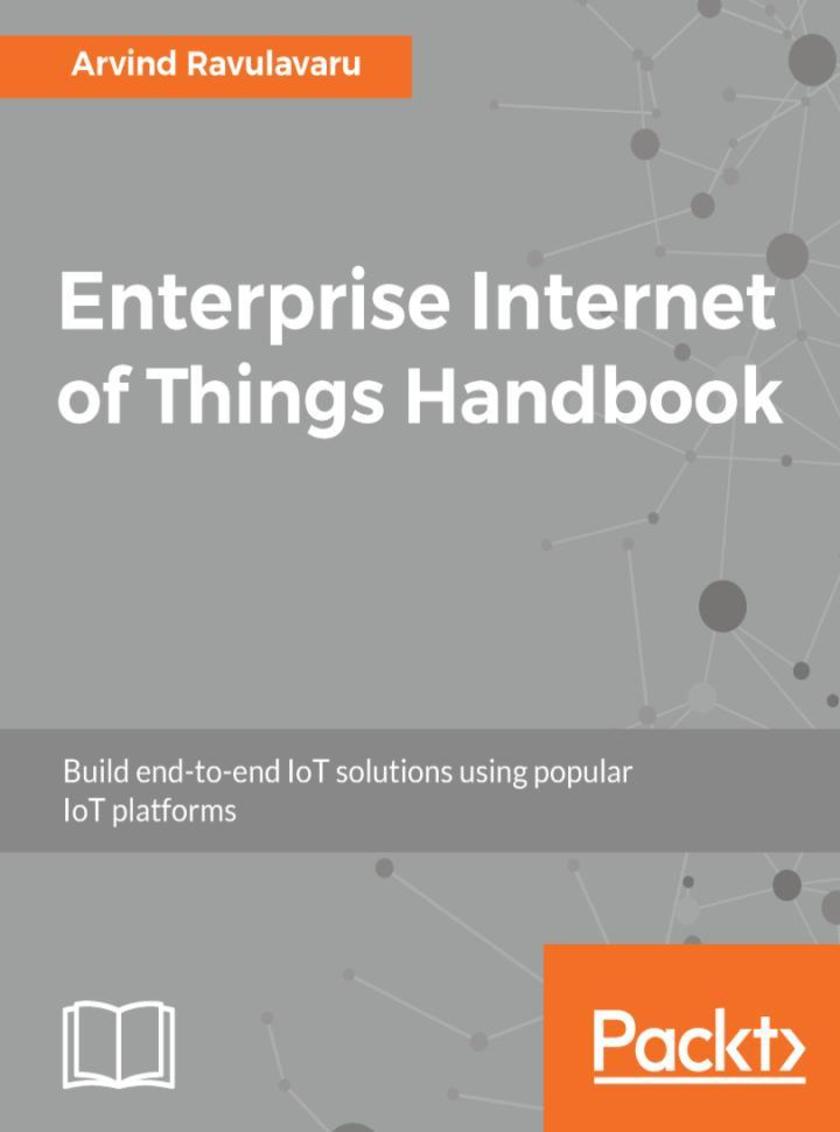
Enterprise Internet of Things Handbook
¥63.21
Get familiar with the building blocks of IoT solutions using off–the-shelf IoT platforms. About This Book ? Work with various trending IoT platforms such as AWS IoT, Azure IoT, Google IoT, IBM Watson IoT, and Kaa IoT ? Gain hands-on knowledge working with Cloud-based IoT platforms, IoT Analytics, and so on. ? A practical guide that will help you build IoT strategies for your organization Who This Book Is For This book is targeted at IoT architects and engineers, or any stakeholders working with IoT solutions in an organization. This book will also help decision makers and professionals from small- and medium-sized enterprises build an IoT strategy for their venture. What You Will Learn ? Connect a Temperature and Humidity sensor and see how these two can be managed from various platforms ? Explore the core components of AWS IoT such as AWS Kinesis and AWS IoTRules Engine ? Build a simple analysis dashboard using Azure IoT and Power BI ? Understand the fundamentals of Google IoT and use Google core APIs to build your own dashboard ? Get started and work with the IBM Watson IoT platform ? Integrate Cassandra and Zeppelin with Kaa IoT dashboard ? Review some Machine Learning and AI and get to know more about their implementation in the IoT domain. In Detail There is a lot of work that is being done in the IoT domain and according to Forbes the global IoT market will grow from $157B in 2016 to $457B by 2020. This is an amazing market both in terms technology advancement as well as money. In this book, we will be covering five popular IoT platforms, namely, AWS IoT, Microsoft Azure IoT, Google IoT Core, IBM Watson IoT, and Kaa IoT middleware. You are going to build solutions that will use a Raspberry Pi 3, a DHT11 Temperature and humidity sensor, and a dashboard to visualize the sensor data in real-time. Furthermore, you will also explore various components of each of the platforms that are needed to achieve the desired solution. Besides building solutions, you will look at how Machine Learning and IoT go hand in hand and later design a simple predictive web service based on this concept. By the end of this book, you will be in a position to implement an IoT strategy best-fit for your organization Style and approach An informative guide that will help you design and implement an IoT Strategy best-fit for your organization
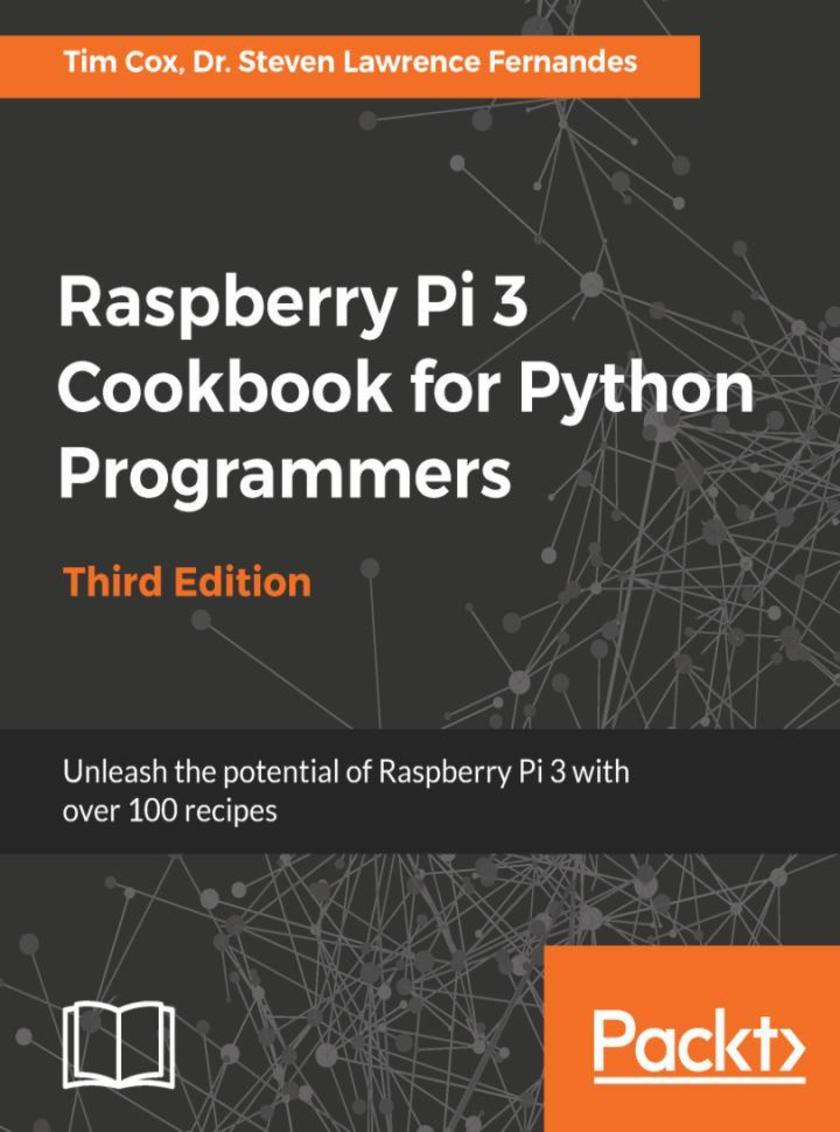
Raspberry Pi 3 Cookbook for Python Programmers
¥63.21
A recipe-based guide to programming your Raspberry Pi 3 using Python About This Book : ? Leverage the power of Raspberry Pi 3 using Python programming ? Create 3D games, build neural network modules, and interface with your own circuits ? Packed with clear, step-by-step recipes to walk you through the capabilities of Raspberry Pi Who This Book Is For : This book is for anyone who wants to master the skills of Python programming using Raspberry Pi 3. Prior knowledge of Python will be an added advantage. What You Will Learn : ? Learn to set up and run Raspberry Pi 3 ? Build text classifiers and perform automation using Python ? Predict sentiments in words and create games and graphics ? Detect edges and contours in images ? Build human face detection and recognition system ? Use Python to drive hardware ? Sense and display real-world data ? Build a neural network module for optical character recognition ? Build movie recommendations system In Detail : Raspberry Pi 3 Cookbook for Python Programmers – Third Edition begins by guiding you through setting up Raspberry Pi 3, performing tasks using Python 3.6, and introducing the first steps to interface with electronics. As you work through each chapter, you will build your skills and apply them as you progress. You will learn how to build text classifiers, predict sentiments in words, develop applications using the popular Tkinter library, and create games by controlling graphics on your screen. You will harness the power of a built in graphics processor using Pi3D to generate your own high-quality 3D graphics and environments. You will understand how to connect Raspberry Pi’s hardware pins directly to control electronics, from switching on LEDs and responding to push buttons to driving motors and servos. Get to grips with monitoring sensors to gather real-life data, using it to control other devices, and viewing the results over the internet. You will apply what you have learned by creating your own Pi-Rover or Pi-Hexipod robots. You will also learn about sentiment analysis, face recognition techniques, and building neural network modules for optical character recognition. Finally, you will learn to build movie recommendations system on Raspberry Pi 3. Style and approach : Written in a cookbook style, this book contains a series of recipes on various topics. It is an easy-to-follow step-by-step guide with examples of feature integration suitable for any search application.
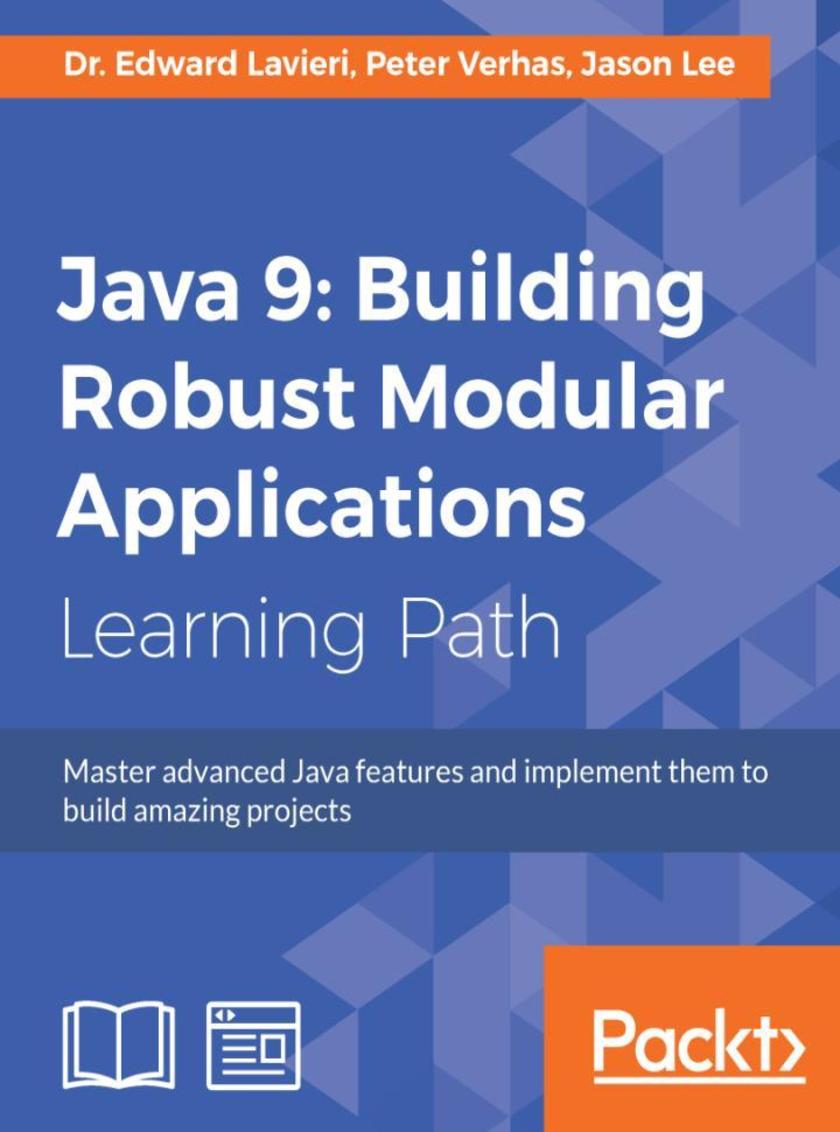
Java 9: Building Robust Modular Applications
¥63.21
Mastering advanced features of Java and implement them to build amazing projects About This Book ? Take advantage of Java's new modularity features to write real-world applications that solve a variety of problems ? Explore the major concepts introduced with Java 9, including modular programming, HTTP 2.0, API changes, and more ? Get to grips with tools, techniques and best practices to enhance application development Who This Book Is For This learning path is for Java developers who are looking to move a level up and learn how to build robust applications in the latest version of Java. What You Will Learn ? Package Java applications as modules using the Java Platform Module System ? Implement process management in Java using the all-new process handling API ? Integrate your applications with third-party services in the cloud ? Interact with mail servers, using JavaMail to build an application that filters spam messages ? Use JavaFX to build rich GUI-based applications, which are an essential element of application development ? Leverage the possibilities provided by the newly introduced Java shell ? Test your application's effectiveness with the JVM harness ? See how Java 9 provides support for the HTTP 2.0 standard In Detail Java 9 and its new features add to the richness of the language; Java is one of the languages most used by developers to build robust software applications. Java 9 comes with a special emphasis on modularity with its integration with Jigsaw. This course is your one-stop guide to mastering the language. You'll be provided with an overview and explanation of the new features introduced in Java 9 and the importance of the new APIs and enhancements. Some new features of Java 9 are ground-breaking; if you are an experienced programmer, you will be able to make your enterprise applications leaner by learning these new features. You'll be provided with practical guidance in applying your newly acquired knowledge of Java 9 and further information on future developments of the Java platform. This course will improve your productivity, making your applications faster. Next, you'll go on to implement everything you've learned by building 10 cool projects. You will learn to build an email filter that separates spam messages from all your inboxes, a social media aggregator app that will help you efficiently track various feeds, and a microservice for a client/server note application, to name just a few. By the end of this course, you will be well acquainted with Java 9 features and able to build your own applications and projects. This Learning Path contains the best content from the following two recently published Packt products: ? Mastering Java 9 ? Java 9 Programming Blueprints Style and approach This practical guide is filled with real-world examples. Its projects will help you get acquainted with concepts in depth.
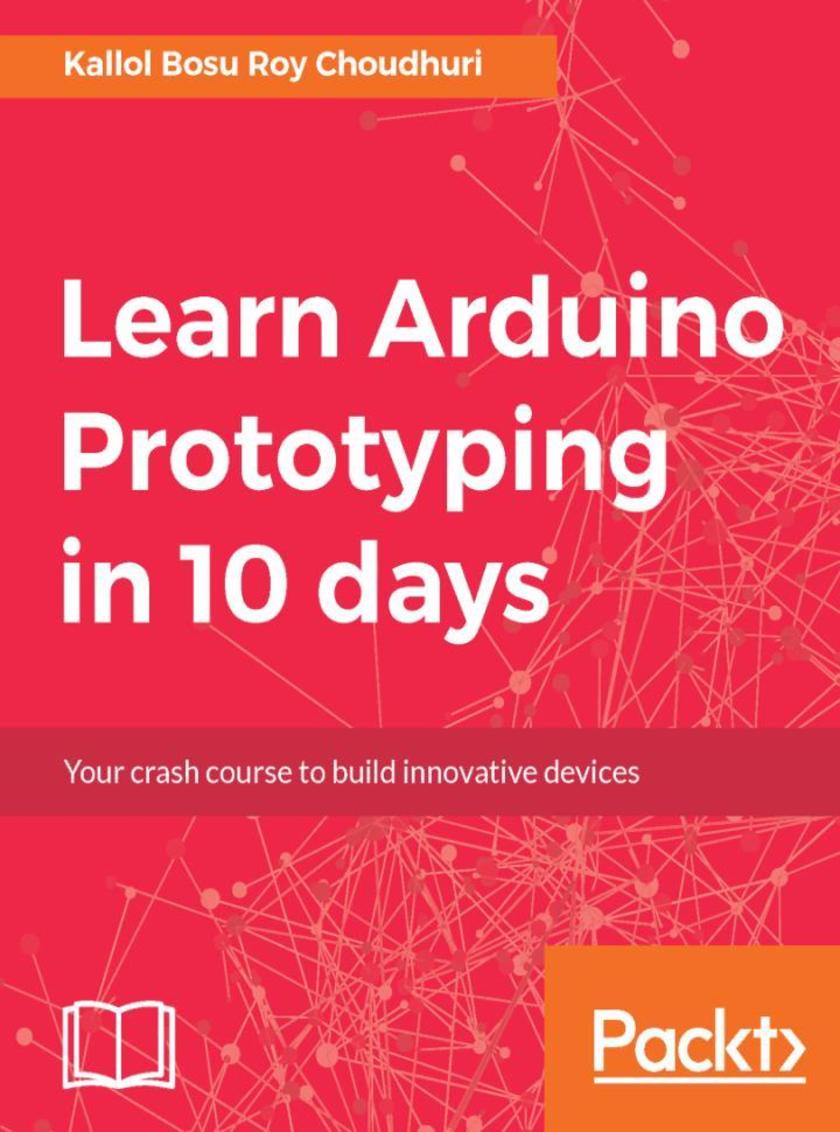
Learn Arduino Prototyping in 10 days
¥63.21
The ultimate power-packed crash course in building Arduino-based projects in just 10 days! About This Book ? A carefully designed 10-day crash course, covering major project/device types, with 20+ unique hands-on examples ? Get easy-to-understand explanations of basic electronics fundamentals and commonly used C sketch functions ? This step-by-step guide with 90+ diagrams and 50+ important tips will help you become completely self-reliant and confident Who This Book Is For This book is a beginner’s crash course for professionals, hobbyists, and students who are tech savvy, have a basic level of C programming knowledge, and basic familiarity with electronics, be it for embedded systems or the Internet of Things. What You Will Learn ? Write Arduino sketches and understand the fundamentals of building prototype circuits using basic electronic components, such as resistors, transistors, and diodes ? Build simple, compound, and standalone devices with auxiliary storage (SD card), a DC battery, and AC power supplies ? Deal with basic sensors and interface sensor modules by using sensor datasheets ? Discover the fundamental techniques of prototyping with actuators ? Build remote-controlled devices with infrared (IR), radio frequency (RF), and telephony with GSM ? Learn IoT edge device prototyping (using ESP8266) and IoT cloud configuration In Detail This book is a quick, 10-day crash course that will help you become well acquainted with the Arduino platform. The primary focus is to empower you to use the Arduino platform by applying basic fundamental principles. You will be able to apply these principles to build almost any type of physical device. The projects you will work through in this book are self-contained micro-controller projects, interfacing with single peripheral devices (such as sensors), building compound devices (multiple devices in a single setup), prototyping standalone devices (powered from independent power sources), working with actuators (such as DC motors), interfacing with an AC-powered device, wireless devices (with Infrared, Radio Frequency and GSM techniques), and finally implementing the Internet of Things (using the ESP8266 series Wi-Fi chip with an IoT cloud platform). The first half of the book focuses on fundamental techniques and building basic types of device, and the final few chapters will show you how to prototype wireless devices. By the end of this book, you will have become acquainted with the fundamental principles in a pragmatic and scientific manner. You will also be confident enough to take up new device prototyping challenges. Style and approach This step-by- step guide will serve as a quick, 10-day crash course to help you become well acquainted with the Arduino platform.
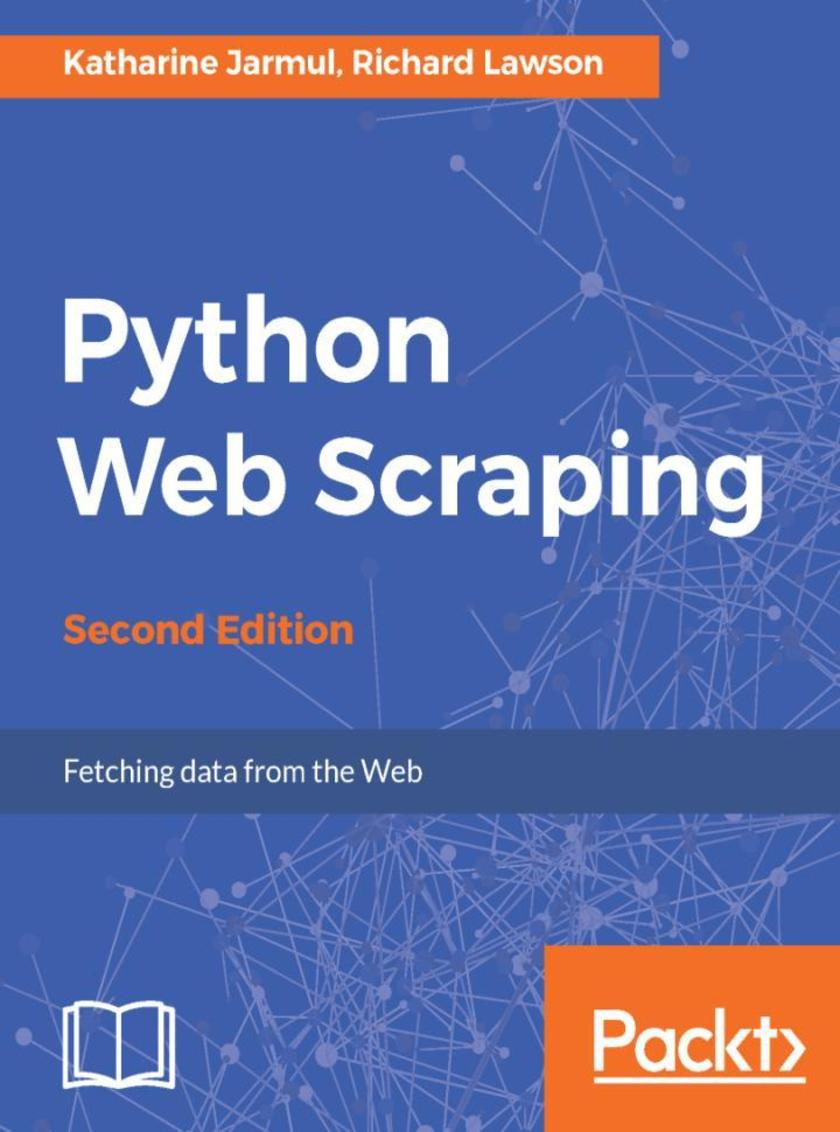
Python Web Scraping - Second Edition
¥63.21
Successfully scrape data from any website with the power of Python 3.x About This Book ? A hands-on guide to web scraping using Python with solutions to real-world problems ? Create a number of different web scrapers in Python to extract information ? This book includes practical examples on using the popular and well-maintained libraries in Python for your web scraping needs Who This Book Is For This book is aimed at developers who want to use web scraping for legitimate purposes. Prior programming experience with Python would be useful but not essential. Anyone with general knowledge of programming languages should be able to pick up the book and understand the principals involved. What You Will Learn ? Extract data from web pages with simple Python programming ? Build a concurrent crawler to process web pages in parallel ? Follow links to crawl a website ? Extract features from the HTML ? Cache downloaded HTML for reuse ? Compare concurrent models to determine the fastest crawler ? Find out how to parse JavaScript-dependent websites ? Interact with forms and sessions In Detail The Internet contains the most useful set of data ever assembled, most of which is publicly accessible for free. However, this data is not easily usable. It is embedded within the structure and style of websites and needs to be carefully extracted. Web scraping is becoming increasingly useful as a means to gather and make sense of the wealth of information available online. This book is the ultimate guide to using the latest features of Python 3.x to scrape data from websites. In the early chapters, you’ll see how to extract data from static web pages. You’ll learn to use caching with databases and files to save time and manage the load on servers. After covering the basics, you’ll get hands-on practice building a more sophisticated crawler using browsers, crawlers, and concurrent scrapers. You’ll determine when and how to scrape data from a JavaScript-dependent website using PyQt and Selenium. You’ll get a better understanding of how to submit forms on complex websites protected by CAPTCHA. You’ll find out how to automate these actions with Python packages such as mechanize. You’ll also learn how to create class-based scrapers with Scrapy libraries and implement your learning on real websites. By the end of the book, you will have explored testing websites with scrapers, remote scraping, best practices, working with images, and many other relevant topics. Style and approach This hands-on guide is full of real-life examples and solutions starting simple and then progressively becoming more complex. Each chapter in this book introduces a problem and then provides one or more possible solutions.
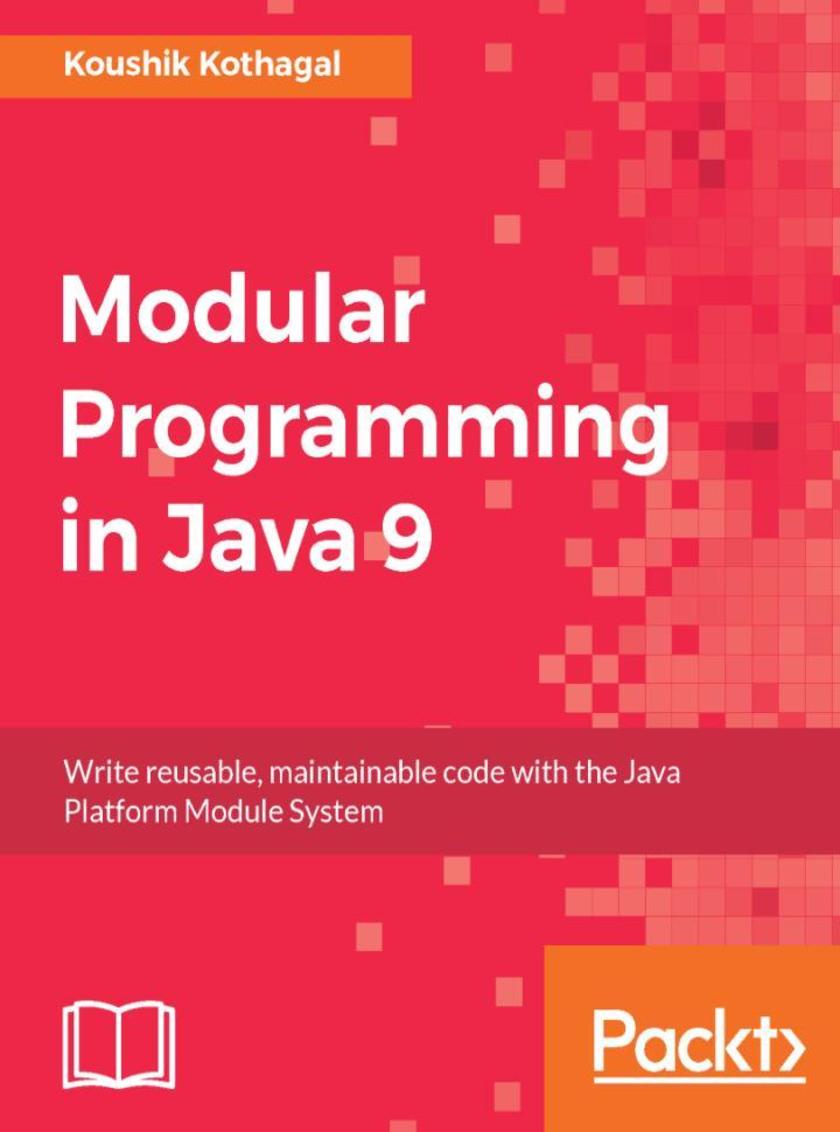
Modular Programming in Java 9
¥63.21
Kick-start your modular programming journey and gear up for the future of Java development About This Book ? Master design patterns and best practices to build truly modular applications in Java 9 ? Upgrade your old Java code to Java 9 with ease ? Build and run a smooth functioning multi-module application. Who This Book Is For This book is written for Java developers who are interested in learning and understanding the techniques and best practices to build modular applications in Java. The book assumes some previous programming experience in Java 8 or earlier, familiarity with the basic Java types such as classes and interfaces, as well as experience in compiling and executing Java programs. What You Will Learn ? Get introduced to the concept of modules and modular programming by working on a fully modular Java application ? Build and configure your own Java 9 modules ? Work with multiple modules and establish inter-module dependencies ? Understand and use the principles of encapsulation, readability, and accessibility ? Use jlink to generate fully loaded custom runtime images like a pro ? Discover the best practices to help you write awesome modules that are a joy to use and maintain ? Upgrade your old Java code to use the new Java 9 module system In Detail The Java 9 module system is an important addition to the language that affects the way we design, write, and organize code and libraries in Java. It provides a new way to achieve maintainable code by the encapsulation of Java types, as well as a way to write better libraries that have clear interfaces. Effectively using the module system requires an understanding of how modules work and what the best practices of creating modules are. This book will give you step-by-step instructions to create new modules as well as migrate code from earlier versions of Java to the Java 9 module system. You'll be working on a fully modular sample application and add features to it as you learn about Java modules. You'll learn how to create module definitions, setup inter-module dependencies, and use the built-in modules from the modular JDK. You will also learn about module resolution and how to use jlink to generate custom runtime images. We will end our journey by taking a look at the road ahead. You will learn some powerful best practices that will help you as you start building modular applications. You will also learn how to upgrade an existing Java 8 codebase to Java 9, handle issues with libraries, and how to test Java 9 applications. Style and Approach The book is a step-by-step guide to understanding Modularity and building a complete application using a modular design.
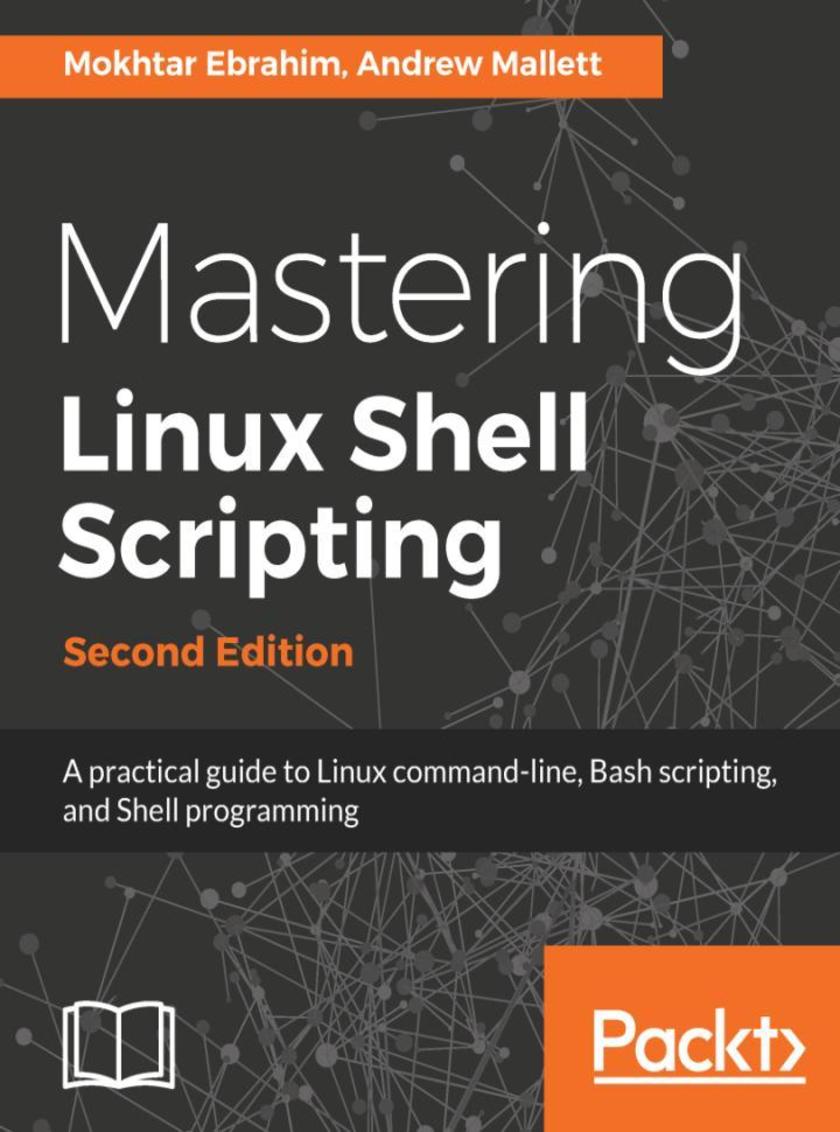
Mastering Linux Shell Scripting
¥63.21
Master the complexities of Bash shell scripting and unlock the power of shell for your enterprise About This Book ? Identify high-level steps such as verifying user input ? Using the command line and conditional statements in creating/executing simple shell scripts ? Create and edit dynamic shell scripts to manage complex and repetitive tasks ? Leverage the command-line to bypass GUI and automate common tasks Who This Book Is For If you are a Linux administrator or a system administrator and are interested in automating tasks in your daily lives, saving time and effort, this book is for you. Basic shell scripting and command-line experience will be required. Familiarity with the tasks you need to automate will be helpful. What You Will Learn ? Make, execute, and debug your first Bash script ? Create interactive scripts that prompt for user input ? Foster menu structures for operators with little command-line experience ? Develop scripts that dynamically edit web configuration files to produce a new virtual host ? Write scripts that use AWK to search and reports on log files ? Draft effective scripts using functions as building blocks, reducing maintenance and build time ? Make informed choices by comparing different script languages such as Python with BASH In Detail In this book, you’ll discover everything you need to know to master shell scripting and make informed choices about the elements you employ. Grab your favorite editor and start writing your best Bash scripts step by step. Get to grips with the fundamentals of creating and running a script in normal mode, and in debug mode. Learn about various conditional statements' code snippets, and realize the power of repetition and loops in your shell script. You will also learn to write complex shell scripts. This book will also deep dive into file system administration, directories, and system administration like networking, process management, user authentications, and package installation and regular expressions. Towards the end of the book, you will learn how to use Python as a BASH Scripting alternative. By the end of this book, you will know shell scripts at the snap of your fingers and will be able to automate and communicate with your system with keyboard expressions. Style and approach The book will capture your attention and keep you engaged with the simplicity and clarity of each explanation. Every step is accompanied by screenshots so you can cross-check the results before moving on.
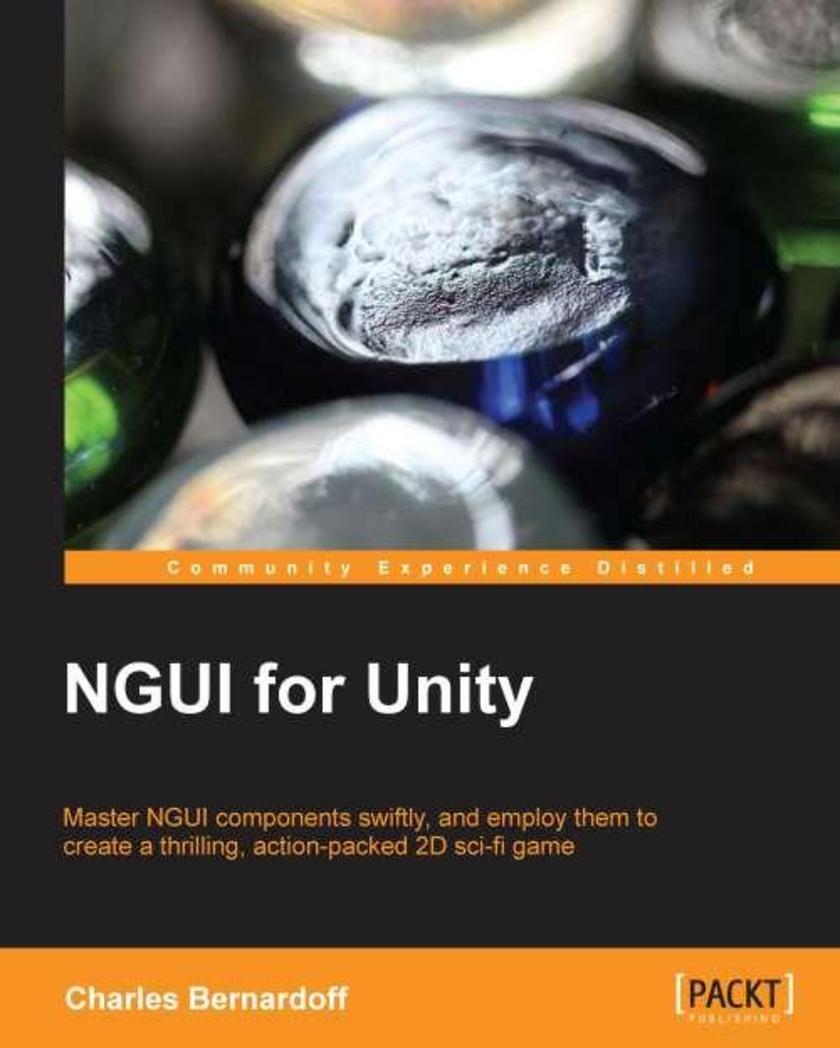
NGUI for Unity
¥63.21
An easytofollow, stepbystep tutorial focusing on practical situations and manipulations, guiding you to create a concrete Graphical User Interface and a simple 2D game. If you are a Unity 3D developer looking forward to learn NGUI for Unity, then this book is for you. Prior knowlege of C# *ing is expected. Additional knowledge of Unity 3D Editor, GameObject and creating/adding *s to GameObject would be beneficial; however, no prior knowledge of NGUI is required.
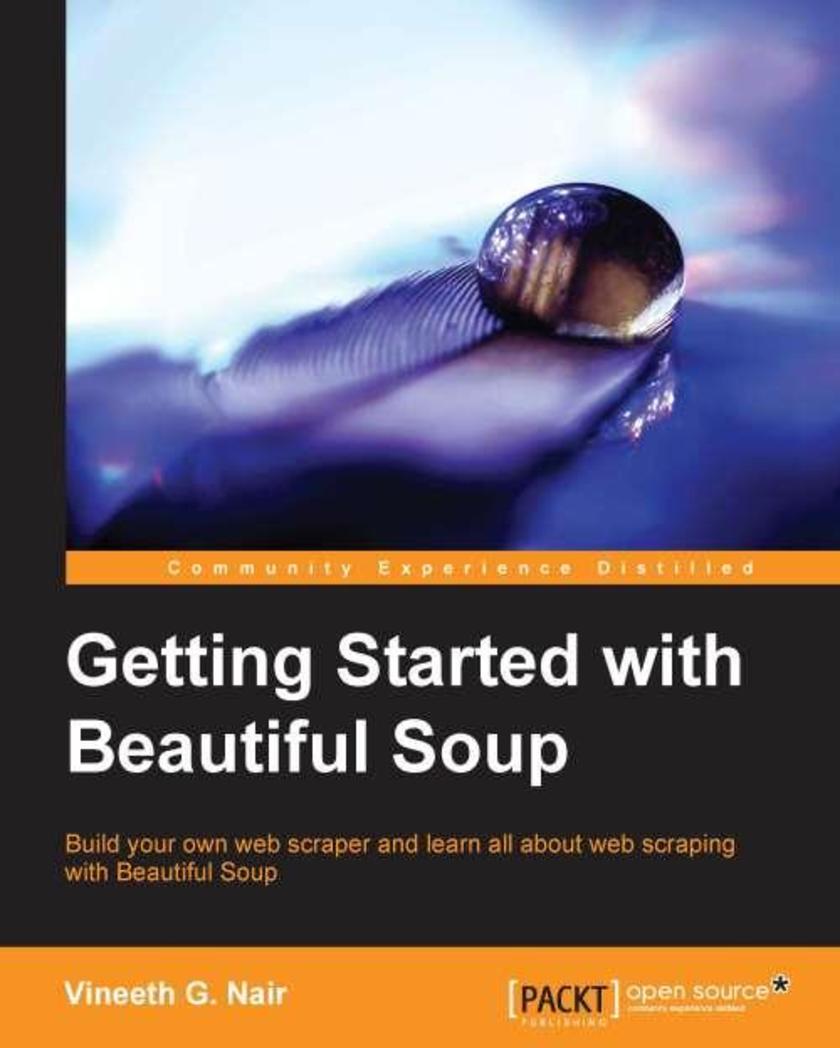
Getting Started with Beautiful Soup
¥63.21
This book is a practical, handson guide that takes you through the techniques of web scraping using Beautiful Soup. Getting Started with Beautiful Soup is great for anybody who is interested in website scraping and extracting information. However, a basic knowledge of Python, HTML tags, and CSS is required for better understanding.
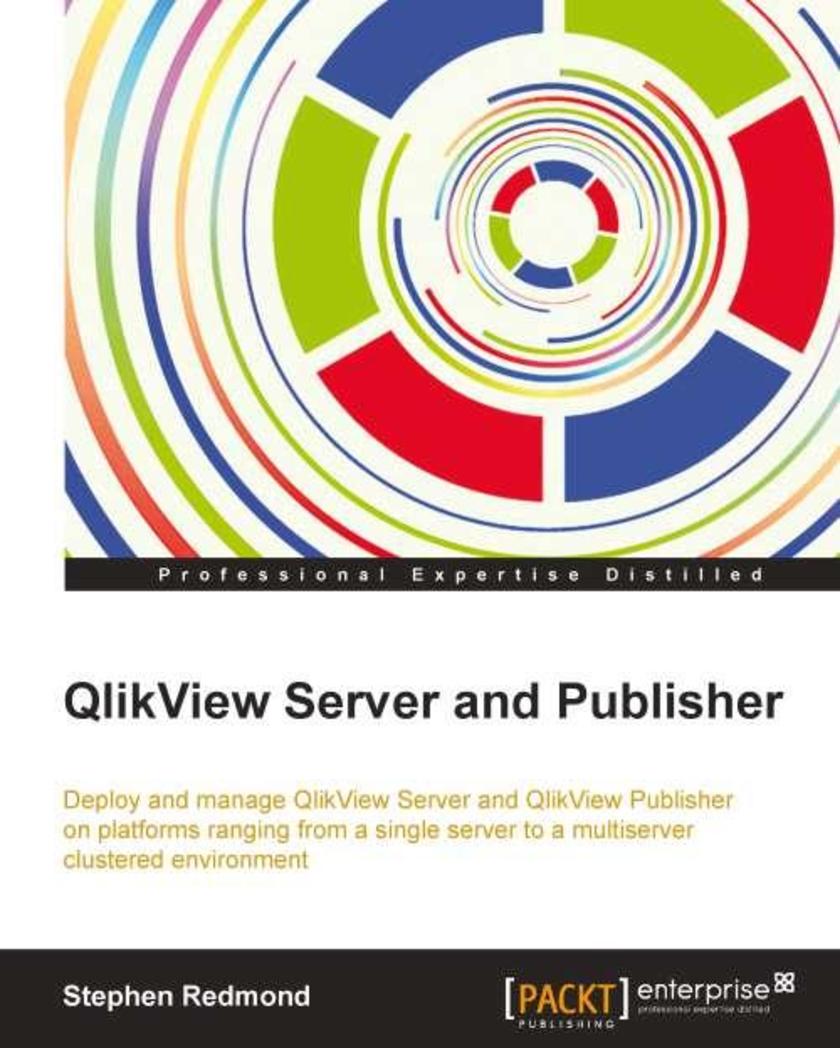
QlikView Server and Publisher
¥63.21
This is a comprehensive guide with a stepbystep approach that enables you to host and manage servers using QlikView Server and QlikView Publisher. If you are a server administrator wanting to learn about how to deploy QlikView Server for server management,analysis and testing, and QlikView Publisher for publishing of business content then this is the perfect book for you. No prior experience with QlikView is expected.
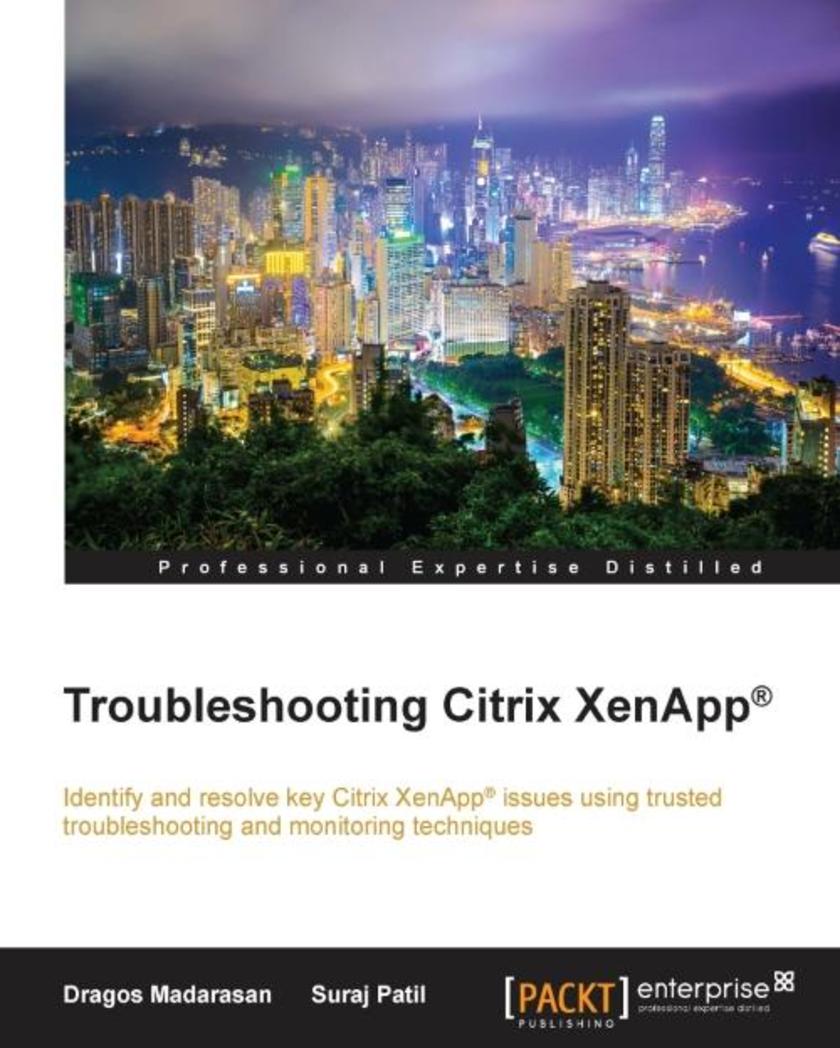
Troubleshooting Citrix XenApp?
¥63.21
Identify and resolve key Citrix XenAppissues using trusted troubleshooting and monitoring techniques About This BookUnderstand the key troubleshooting methodologies when working with XenApp 7.5 version and aboveUncover effective tips and techniques to solve real-world XenAppinfrastructure problemsThis is a fast-paced guide to developing key troubleshooting and problem resolution skills you can put to use in a Citrix environmentWho This Book Is ForThis book is for Citrix Administrators or Citrix Engineers who are currently managing Citrix XenAppin a production environment and want to learn how to troubleshoot XenAppissues in the shortest possible time. It is assumed that you have a basic understanding of XenApp’s components and how to implement and manage a XenAppinfrastructure.What You Will LearnGet to know about troubleshooting methodologies and perform a root cause analysis of the problemUnderstand the individual components and interactions required for a successful XenApp environmentsIdentify and troubleshoot issues around the core Citrix componentsIdentify XenAppcomponents and their roles and learn how they interact with the communication channelsGain tips and tricks to optimize Citrix deploymentsMonitor and optimize the XenAppenvironmentIn DetailCitrix XenAppis an application virtualization product from Citrix. It allows users to connect to their corporate applications from various computer systems and even mobile devices. XenApphas grown into a complex software with ever-expanding infrastructures in place. Together with tight integrations with other systems such as Terminal Services, Active Directory, and other third-party authentication services, troubleshooting XenApphas become more complicated.This book teaches you how to approach troubleshooting complex issues with XenAppdeployments and understand the problem, find a fix or workaround, determine the root cause, and apply corrective steps wherever applicable. The book progresses to give you an idea about the many supportive components that play an important role in XenApp’s application delivery model and should be considered while troubleshooting XenAppissues. It also shows you standard troubleshooting processes so that you can resolve complex XenAppissues in a mission critical environment.By the end of this book, you will see how and where to use supportive components that help minimize XenAppissues. Also, we’ll explain various tools that can be useful when monitoring and optimizing entire application and desktop delivery model.Style and approachThis is an easy-to-follow, fast-paced, example-oriented guide with a brief explanation on various troubleshooting methodologies to walk you through a host of real-life problems.
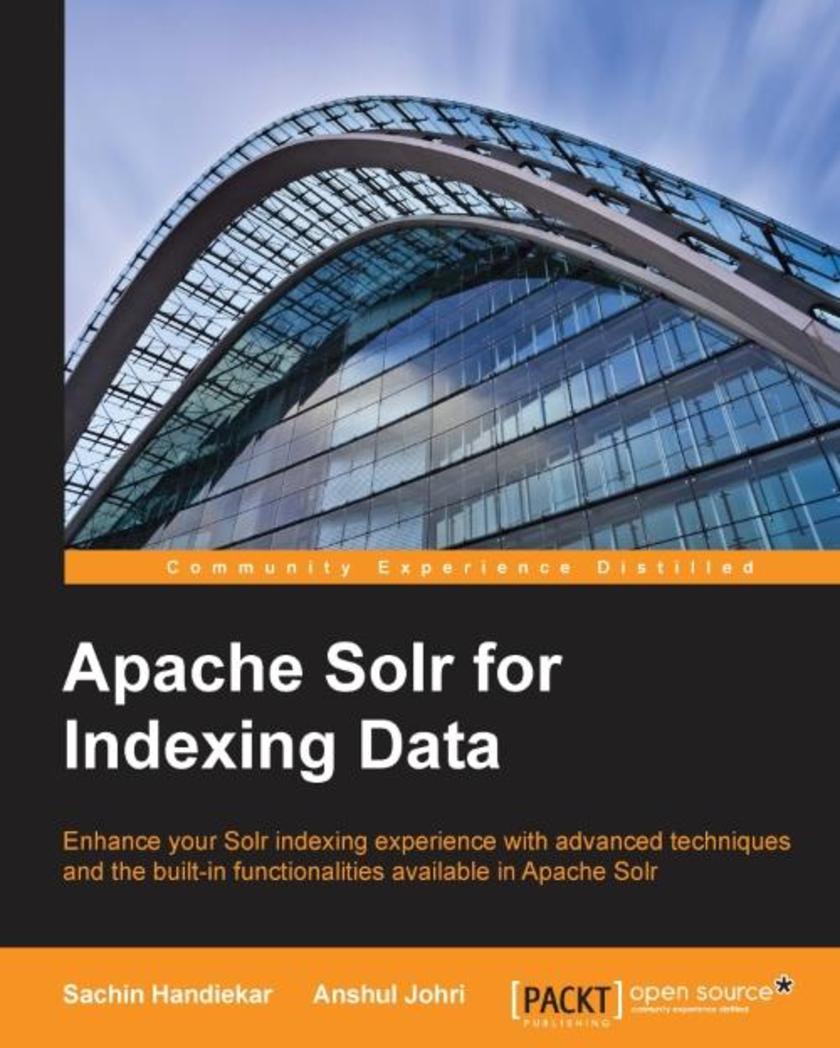
Apache Solr for Indexing Data
¥63.21
Enhance your Solr indexing experience with advanced techniques and the built-in functionalities available in Apache Solr About This Book Learn about distributed indexing and real-time optimization to change index data on fly Index data from various sources and web crawlers using built-in analyzers and tokenizers This step-by-step guide is packed with real-life examples on indexing data Who This Book Is For This book is for developers who want to increase their experience of indexing in Solr by learning about the various index handlers, analyzers, and methods available in Solr. Beginner level Solr development skills are expected. What You Will Learn Get to know the basic features of Solr indexing and the analyzers/tokenizers available Index XML/JSON data in Solr using the HTTP Post tool and CURL command Work with Data Import Handler to index data from a database Use Apache Tika with Solr to index word documents, PDFs, and much more Utilize Apache Nutch and Solr integration to index crawled data from web pages Update indexes in real-time data feeds Discover techniques to index multi-language and distributed data in Solr Combine the various indexing techniques into a real-life working example of an online shopping web application In Detail Apache Solr is a widely used, open source enterprise search server that delivers powerful indexing and searching features. These features help fetch relevant information from various sources and documentation. Solr also combines with other open source tools such as Apache Tika and Apache Nutch to provide more powerful features. This fast-paced guide starts by helping you set up Solr and get acquainted with its basic building blocks, to give you a better understanding of Solr indexing. You’ll quickly move on to indexing text and boosting the indexing time. Next, you’ll focus on basic indexing techniques, various index handlers designed to modify documents, and indexing a structured data source through Data Import Handler. Moving on, you will learn techniques to perform real-time indexing and atomic updates, as well as more advanced indexing techniques such as de-duplication. Later on, we’ll help you set up a cluster of Solr servers that combine fault tolerance and high availability. You will also gain insights into working scenarios of different aspects of Solr and how to use Solr with e-commerce data. By the end of the book, you will be competent and confident working with indexing and will have a good knowledge base to efficiently program elements. Style and approach This fast-paced guide is packed with examples that are written in an easy-to-follow style, and are accompanied by detailed explanation. Working examples are included to help you get better results for your applications.
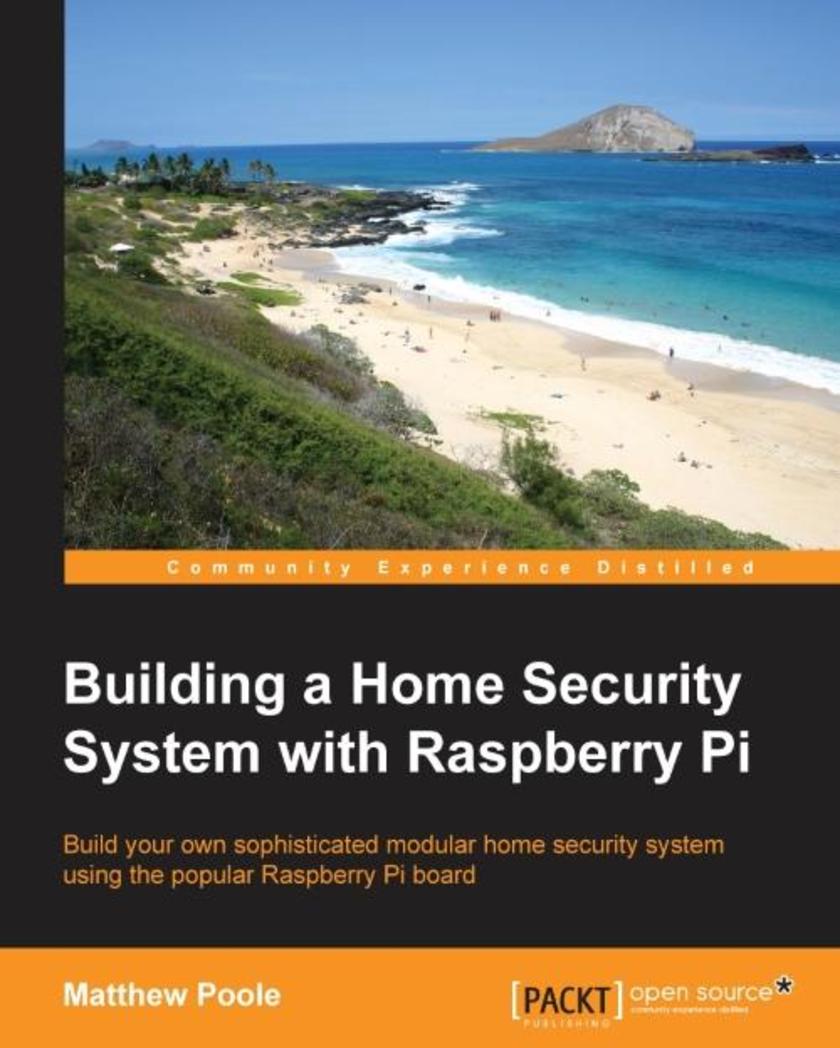
Building a Home Security System with Raspberry Pi
¥63.21
Build your own sophisticated modular home security system using the popular Raspberry Pi board About This Book This book guides you through building a complete home security system with Raspberry Pi and helps you remotely access it from a mobile device over the Interne It covers the fundamentals of interfacing sensors and cameras with the Raspberry Pi so that you can connect it to the outside world It follows a modular approach so that you can choose the modules and features you want for your customized home security system Who This Book Is For This book is for anyone who is interested in building a modular home security system from scratch using a Raspberry Pi board, basic electronics, sensors, and simple *s. This book is ideal for enthusiastic novice programmers, electronics hobbyists, and engineering professionals. It would be great if you have some basic soldering skills in order to build some of the interface modules. What You Will Learn Understand the concepts behind alarm systems and intrusion detection devices Connect sensors and devices to the on-board digital GPIO ports safely Monitor and control connected devices easily using Bash shell *ing Build an I/O port expander using the I2C bus and connect sensors and anti-tamper circuits Capture and store images using motion detectors and cameras Access and manage your system remotely from your mobile phone Receive intrusion alerts and images through your e-mail Build a sophisticated multi-zone alarm system In Detail The Raspberry Pi is a powerful low-cost credit-card-sized computer, which lends itself perfectly as the controller for a sophisticated home security system. Using the on-board interfaces available, the Raspberry Pi can be expanded to allow the connection of a virtually infinite number of security sensors and devices. The Raspberry Pi has the processing power and interfaces available to build a sophisticated home security system but at a fraction of the cost of commercially available systems. Building a Home Security System with Raspberry Pi starts off by showing you the Raspberry Pi and how to set up the Linux-based operating system. It then guides you through connecting switch sensors and LEDs to the native GPIO connector safely, and how to access them using simple Bash *s. As you dive further in, you’ll learn how to build an input/output expansion board using the I2C interface and power supply, allowing the connection of the large number of sensors needed for a typical home security setup. In the later chapters of the book, we'll look at more sophisticated topics such as adding cameras, remotely accessing the system using your mobile phone, receiving intrusion alerts and images by e-mail, and more. By the end of the book, you will be well-versed with the use of Raspberry Pi to power a home-based security system that sends message alerts whenever it is triggered and will be able to build a truly sophisticated and modular home security system. You will also gain a good understanding of Raspberry Pi's ecosystem and be able to write the functions required for a security system. Style and approach This easy-to-follow guide comprises a series of projects, where every chapter introduces a new concept and at the end of the book, all these concepts are brought together to create an entire home security system. This book features clear diagrams and code every step of the way.
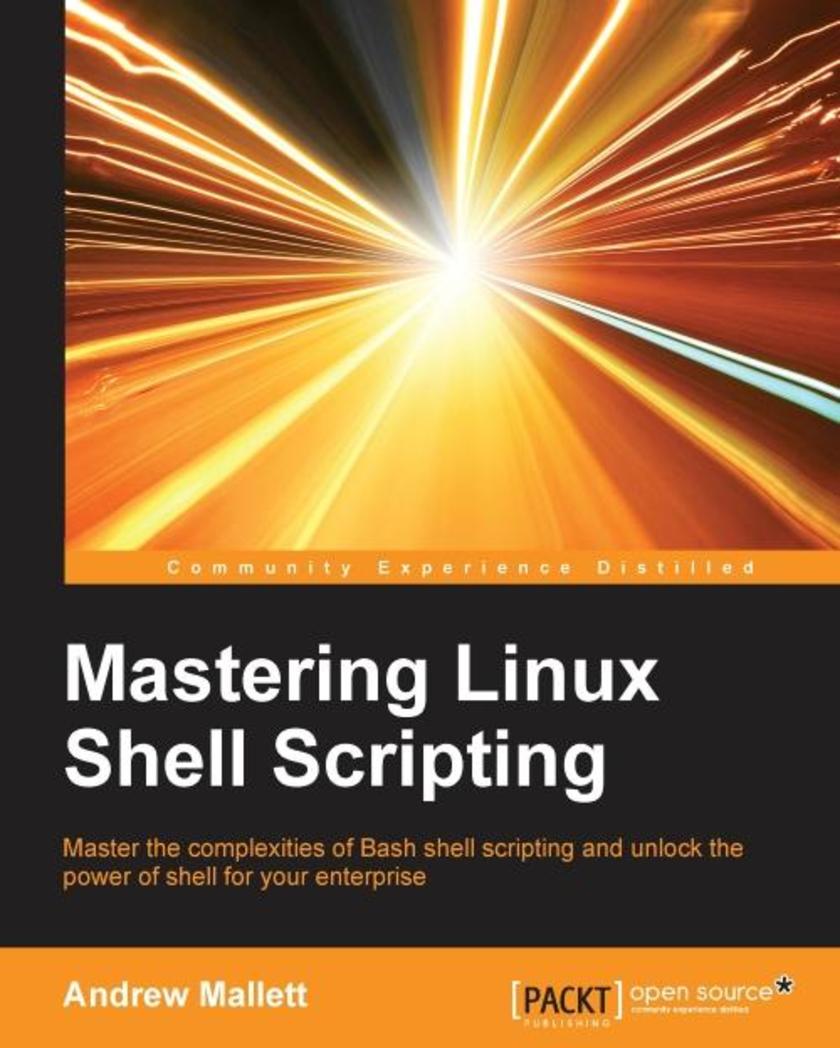
Mastering Linux Shell Scripting
¥63.21
Master the complexities of Bash shell *ing and unlock the power of shell for your enterprise About This Book Identify the high level steps such as verifying user input, using command lines and conditional statements in creating and executing simple shell *s Create and edit dynamic shell *s to manage complex and repetitive tasks Learn about *ing in Perl and programming in Python as a BASH *ing alternative with this practical, step-by-step guide Who This Book Is For Mastering Linux Shell Scripting has been written for Linux administrators who want to automate tasks in their daily lives, saving time and effort. You’ll need to have command-line experience and be familiar with the tasks that you need to automate. What You Will Learn Use the type command to identify the order of command evaluation Create interactive *s that prompt for user input Foster menu structures for operators with little command-line experience Develop *s that dynamically edit web configuration files to produce a new virtual host Write *s that use AWK to search and reports on log files Draft effective *s using functions as building blocks, reducing maintenance and build time Make informed choices by comparing different * languages such as Perl and Python with BASH In Detail Shell *ing is a quick method to prototype a complex application or a problem by automating tasks when working on Linux-based systems. Using both simple one-line commands and command sequences complex problems can be solved with ease, from text processing to backing up sysadmin tools. In this book, you’ll discover everything you need to know to master shell *ing and make informed choices about the elements you employ. Get to grips with the fundamentals of creating and running a * in normal mode, and in debug mode. Learn about various conditional statements' code snippets, and realize the power of repetition and loops in your shell *. Implement functions and edit files using the Stream Editor, * in Perl, program in Python – as well as complete coverage of other *ing languages to ensure you can choose the best tool for your project. Style and approach The book will capture your attention and keep you engaged with the simplicity and clarity of each explanation. Every step is accompanied with screen captures so you can cross-check the results before moving on.
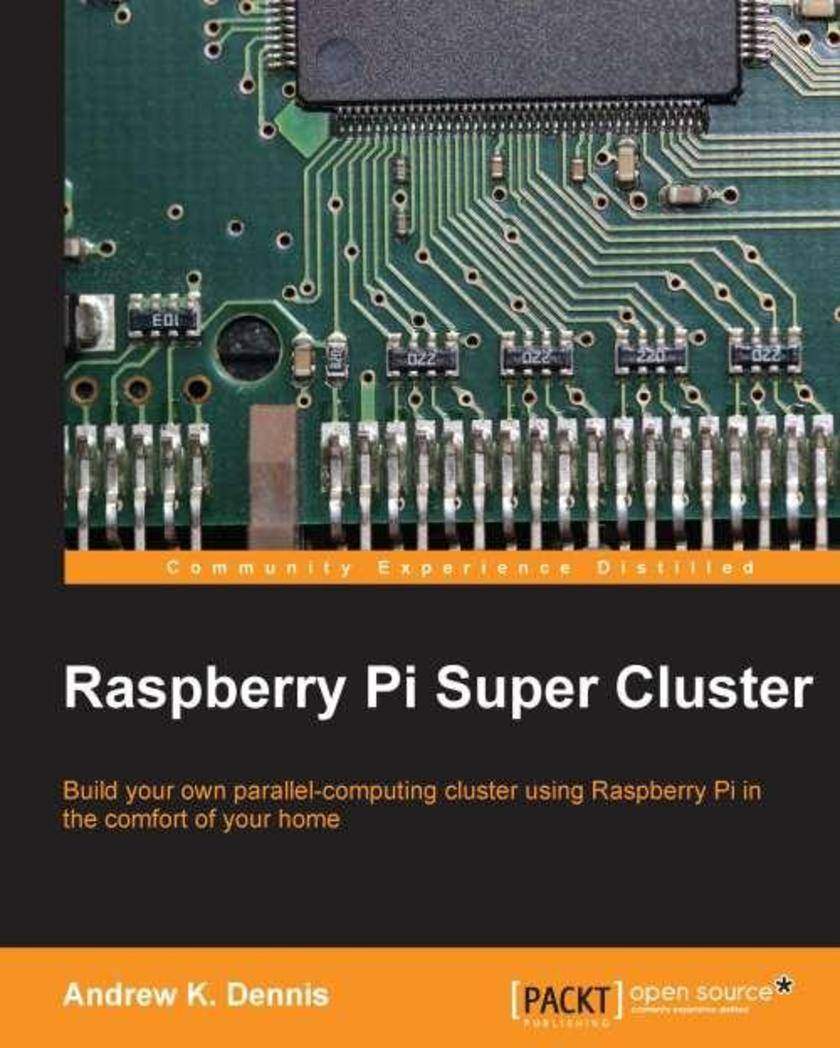
Raspberry Pi Super Cluster
¥63.21
This book follows a step-by-step, tutorial-based approach which will teach you how to develop your own super cluster using Raspberry Pi computers quickly and efficiently.Raspberry Pi Super Cluster is an introductory guide for those interested in experimenting with parallel computing at home. Aimed at Raspberry Pi enthusiasts, this book is a primer for getting your first cluster up and running. Basic knowledge of C or Java would be helpful but no prior knowledge of parallel computing is necessary.
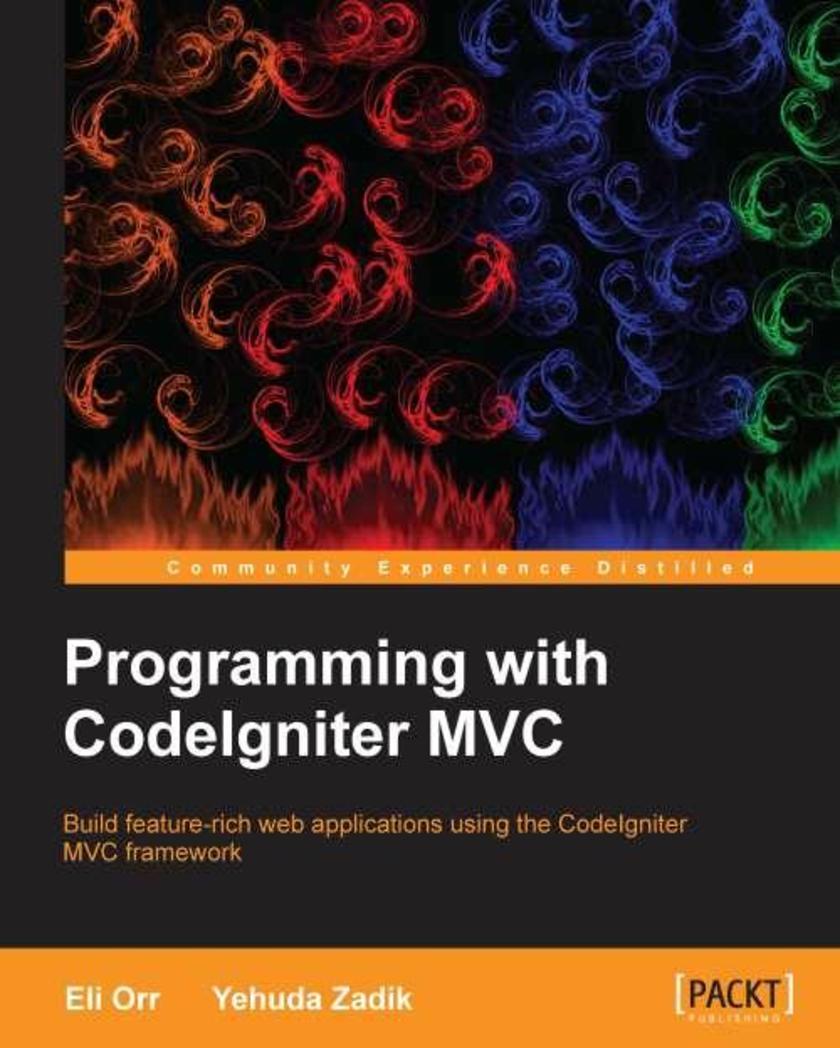
Programming with CodeIgniterMVC
¥63.21
The book is written for PHP developers who wish to learn how to use MVC for application development, using CodeIgniter. No experience of CodeIgniter would be necessary, as this book is for beginning MVC development.This book is written for PHP developers who wish to learn how to use the CodeIgniterMVC framework for application development. No experience of CodeIgniteris necessary, as this book is for beginning MVC development.
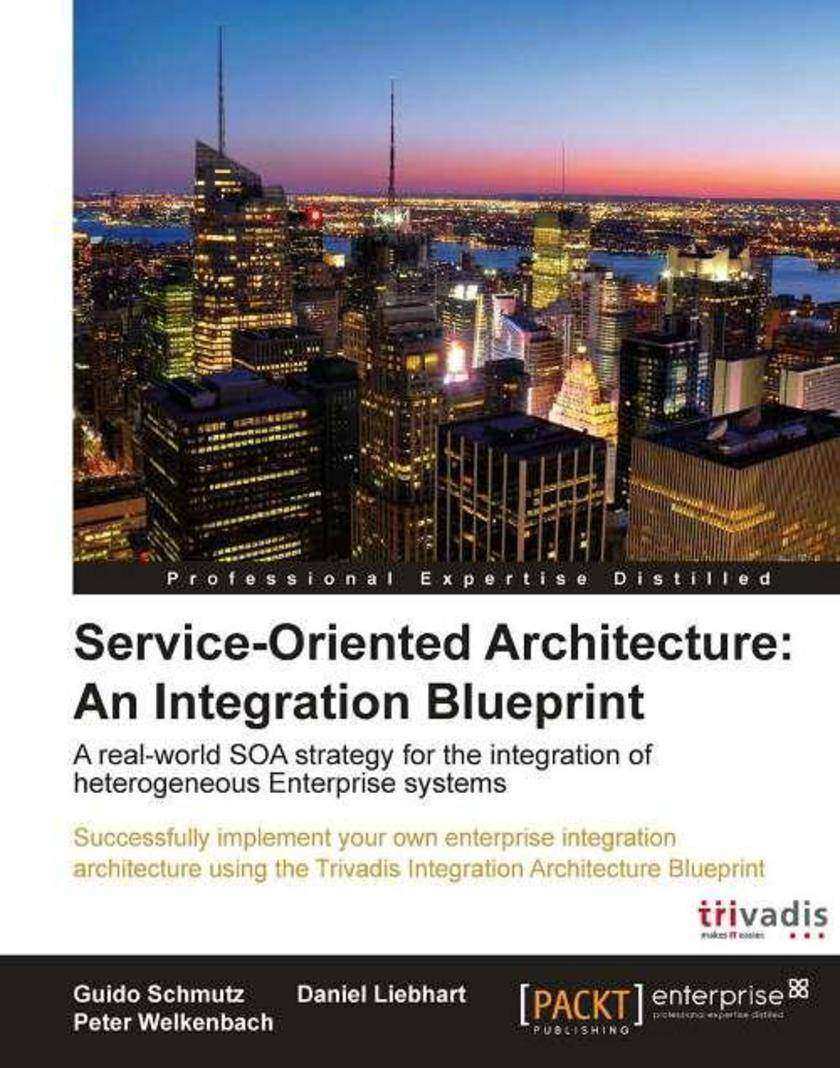
Service Oriented Architecture: An Integration Blueprint
¥63.21
A theoretical guide, this book provides detailed and structured explanations and visualizations of the Trividas Integration Architecture Blueprint, showing you the strategy to implement your own integration projects. It draws on real-world integrations at an architectural level, and explores both product-neutral and specific integration scenarios. If you are an IT architect or manager who is responsible for any aspect of operating integration solutions, and you want to learn how to implement integration architectures in practice with the help of the Trivadis Integration Architecture Blueprint, then this book is for you. A comprehensive understanding of SOA is required, though previous knowledge of the Trivadis Blueprint is not necessary. Less experienced specialists who have not yet dealt with integration will benefit greatly from this book by first gaining knowledge of concepts and terminology used in the context of integration architecture, while those already familiar with such expertise can move straight to discovering the base technologies associated with implementing solutions based on the Blueprint, and getting to grips with the Blueprint's structure itself. If you want to assess the solutions from different vendors and ultimately achieve comprehensive SOA integration results using the Trivadis Integration Architecture Blueprint, then this book is ideal for you.




 购物车
购物车 个人中心
个人中心



